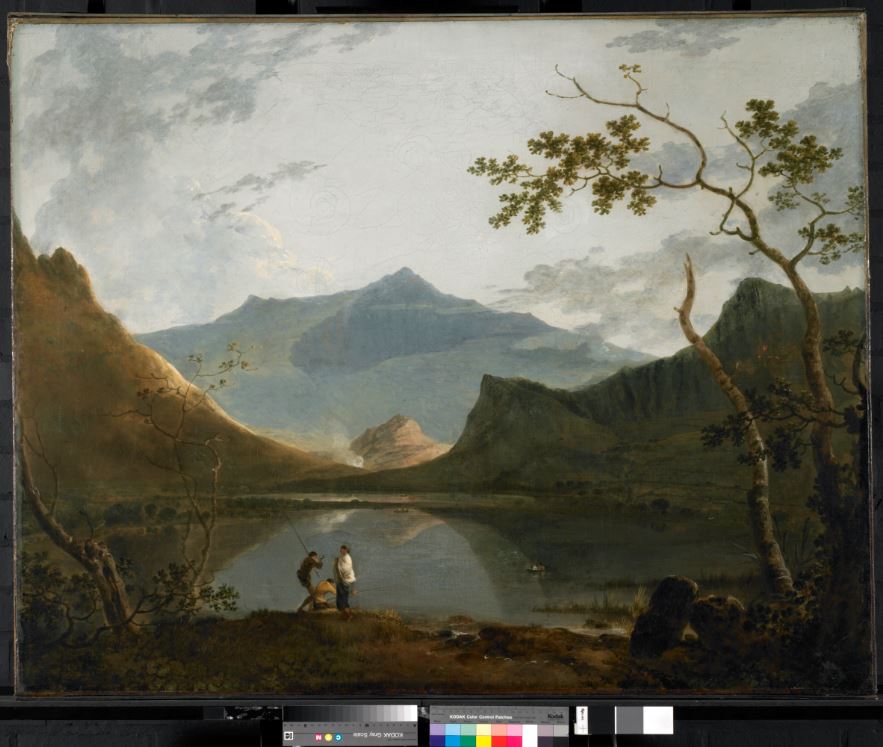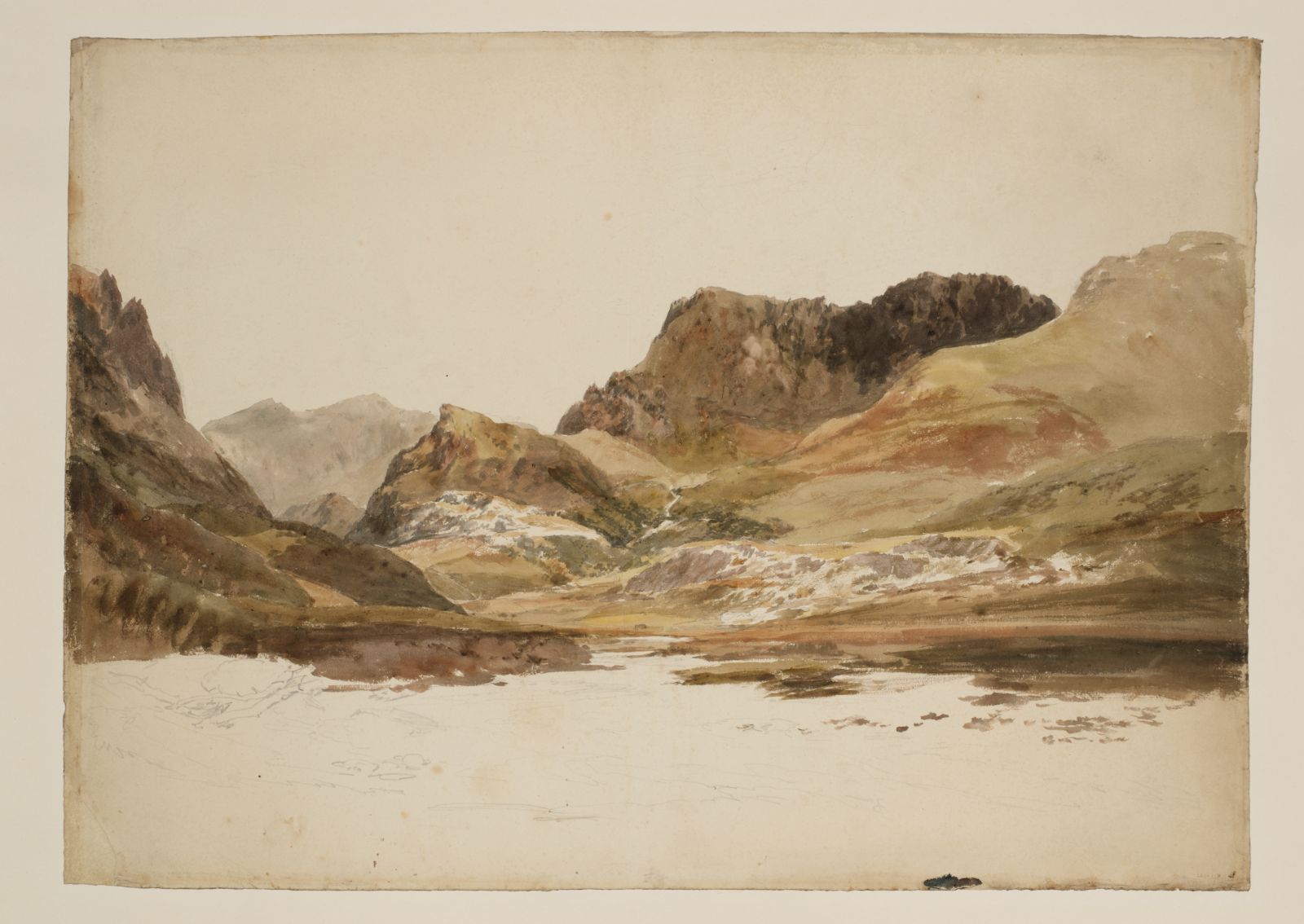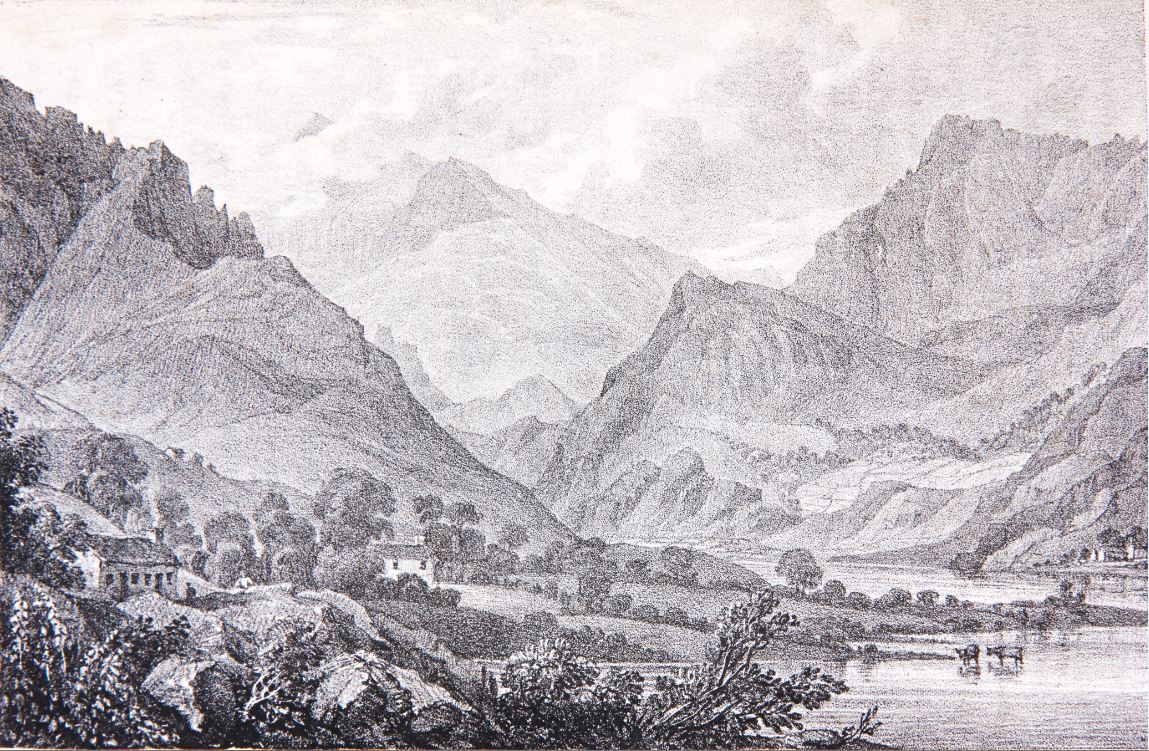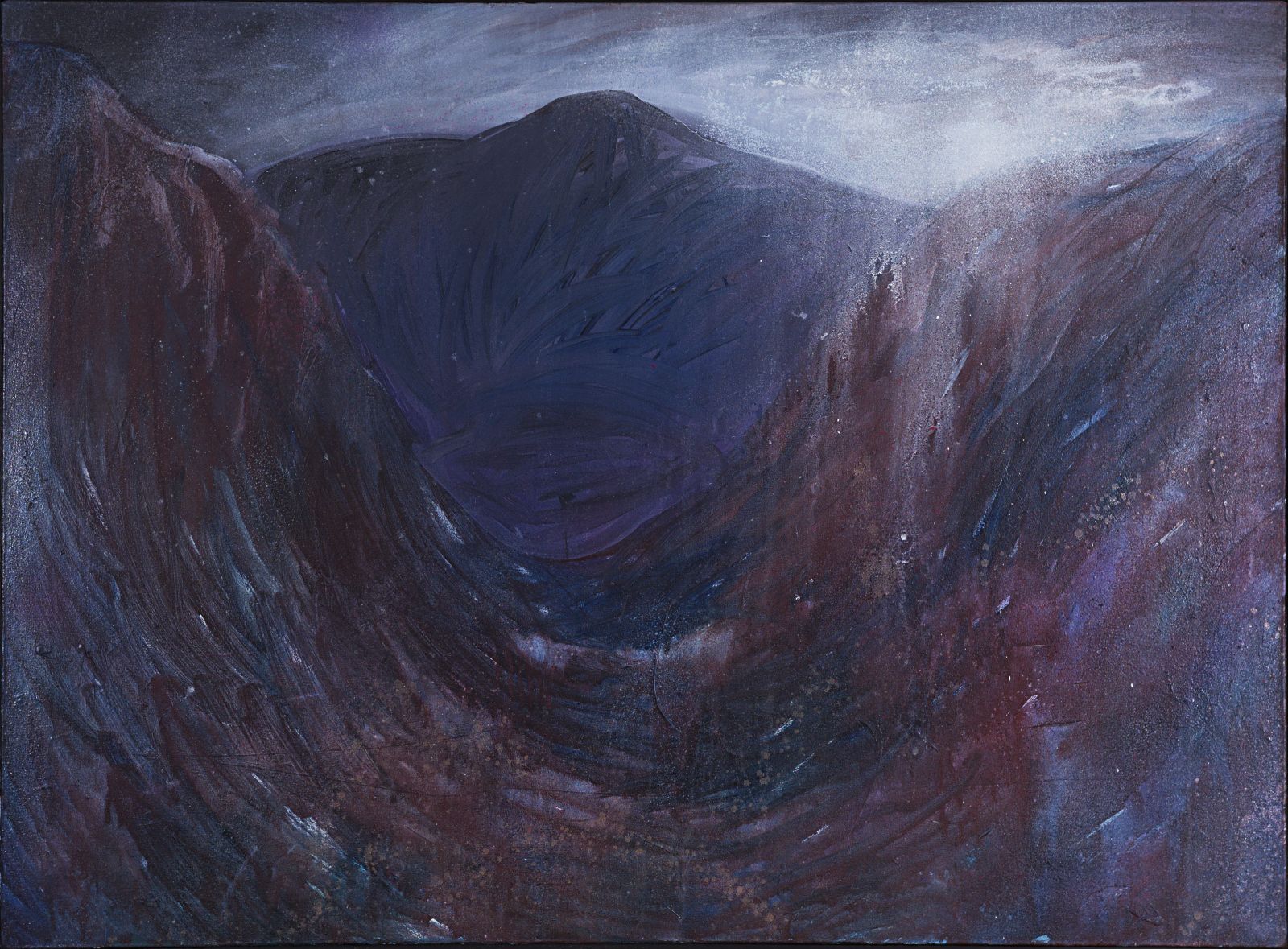Snowdon: Wilson’s view
10 February 2020
Artist Peter Bishop provides a guide to the art inspired by Snowdon over three centuries
This view of Snowdon is located within the Snowdonia National Park, although the point from which it was taken lies just outside it. Richard Wilson (1713-1782) painted this vista in oils in 1765. This viewpoint was described by Thomas Pennant in his travel guidebook A Tour in Wales (1784). He wrote:
From hence is a noble view of the Wyddfa, which terminates the view through the vista of
Drws y Coed. It is from this spot Mr. WILSON has favoured us with a view, as
magnificent as it is faithful. Few are sensible of this; few visit the spot.
(Thomas Pennant, A Tour in Wales 1784, vol 2, p.181)

Image: Richard Wilson, Snowdon from Llyn Nantlle, c.1765, oil on canvas, 101 x 127cm, Walker Art Gallery, Liverpool
The painting shows Snowdon in an early morning light and uses a classical construction of space which perfectly matches the geographical features of the location. The view shows two lakes with foreground figures and a number of boats. The picture was engraved and published in 1775. Professor Robin Simon has identified Wilson’s viewpoint as being about 1km west of the present lake, on a minor road, at the entrance to what is now a disused quarry. In Wilson’s time it was close to the lower lake, Llyn Nantlle Isaf, later drained to protect the Slate works.

Image: JMW Turner, Y Garn with Snowdon in the distance, from above Llyn Nantlle, 1799, gouache and watercolour on paper, Tate Britain
This large coloured drawing was made outside by JMW Turner (1775-1851) on his second tour to north Wales in 1799. Turner would have been familiar with Wilson’s engraving of his oil painting towards Snowdon from the Nantlle lakes and would have read Pennant’s description of the location in The Journey to Snowdon chapter in A Tour in Wales.
For this view Turner has moved further up the valley above the lakes and nearer to Snowdon. The foreground is unfinished and suggests he was in a hurry.

Image: Thomas Mann Baynes, Snowdon from Nantlle, 1825, lithograph, 10 x 15cm, in Rev. GJ Freeman, Sketches in Wales.., London, 1926: plate 13..
Thomas Mann Baynes (1784-1854) was commissioned to make lithographs to illustrate Freeman’s three walking tours published in 1826. Baynes was both a watercolour artist and a lithographer Here he used the new lithographic process for the 15 illustrations in the book.
This view is taken from a point further up the valley. The lack of a firm foreground is disquieting. In this view the summit of Snowdon is partly obscured by cloud; a feature also present in Wilson’s earlier view.
Freeman acknowledged Wilson’s prior visual claim to the site when he wrote ‘Wilson took his celebrated and most accurate view of Snowdon. No scene is finer that I know’ (Freeman p. 216).
This vista of Snowdon from Llyn Nantlle later became popular in photographic form and in recent years commercial photographs have been used in the promotion of north Wales as a tourist destination in postcards, calendars, leaflets and brochures.

Image: Peter Bishop, Snowdon from Llyn Nantlle, 2012, acrylic and enamels on canvas, 89 x 120cm, Tabernacle Collection, Museum of Modern Art, Machynlleth
I first visited this location in the mid 1990s to see for myself the view that Richard Wilson had painted in the mid eighteenth century. I was surprised to see how faithful to the topography his view of the distant Snowdon is, especially when compared with his view of Llyn y Cau, Cader Idris with its exaggerated landscape forms.
In this painting I have presented a view seen from above the one remaining Nantlle lake, looking towards Snowdon. It was painted in the studio from drawings and colour studies made on location.
By Peter Bishop artist, writer and lecturer.
For a fuller account of this viewpoint, see chapter three, Views of Snowdon, pp 46-69, in Peter Bishop, The Mountains of Snowdonia in Art, Gwasg Carreg Gwalch, 2015. See my paintings on my website: www.peterbishoppaintings.com
